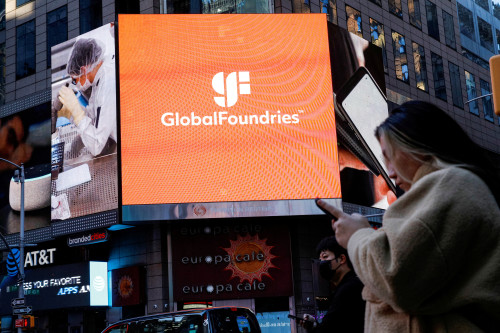By Max A. Cherney and Stephen Nellis
SAN FRANCISCO (Reuters) -Chip manufacturer GlobalFoundries said on Wednesday it planned to increase its investment plans to $16 billion, allocating an additional $1 billion to capital spending and $3 billion to research in several emerging chip technologies.
The Malta, New York-based company said it is working with the Trump administration to bring chip manufacturing technology and various components of that supply chain onto U.S. soil.
The chip manufacturer attributed the expansion to the boom in artificial intelligence hardware, a trend that has also benefited other chipmakers such as Taiwan Semiconductor Manufacturing Co.
The $1 billion capital spending boost is expected to support factory expansions in New York and Vermont, and is in addition to the $12 billion the company said in 2024 it planned to invest over the next 10-plus years.
GlobalFoundries did not disclose a specific timeframe for the additional funding it announced on Wednesday. Some of the work is already in progress, such as converting the factory in Vermont to produce chips using a technology called gallium nitride, which can be more power efficient than standard silicon in some applications.
“The reason we’re not sort of being super clear about exactly what’s spent by when is because obviously some of this is demand-driven,” GlobalFoundries CEO Tim Breen told Reuters. “We see a very strong demand, but it takes time to convert (demand) into specific ramps and project timing. And what you don’t want to do is shoot too far ahead or fall too far behind.”
The $3 billion in research and development GlobalFoundries said it will spend will be split into three areas: chip packaging technologies, silicon photonics that can be used to make quantum computing processors, and gallium nitride, which is used in electric vehicles and other power-related applications, such as AI servers.
In April, Intel and TSMC showed off their latest chip manufacturing and packaging capabilities at events, including the capability to stitch together multiple chips into a dinner-plate-sized device.
(Reporting by Max A. Cherney and Stephen Nellis in San Francisco; Editing by Himani Sarkar and Marguerita Choy)


